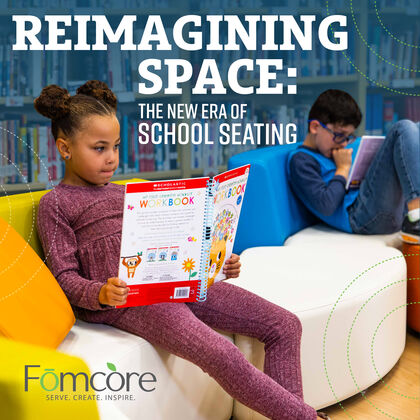Loading...

Reimagining Space: The New Era of School Seating
Classrooms are no longer confined to rigid rows of desks and a single chalkboard at the front. Over the years, educational spaces have evolved significantly, with a shift toward more dynamic, flexible, and student-centered designs. This transformation is driven largely by a deeper understanding of how learning environments impact student engagement, collaboration, and well-being.
How Classrooms Have Changed
The classroom of 20 years ago looked quite different from those of today. Traditional classrooms, characterized by rows of desks facing a teacher’s podium, were designed for a teacher-centered approach, where instruction was primarily lecture-based. However, research and evolving educational philosophies have led to a reimagining of what classrooms can be.
- A Shift Toward Flexibility: According to a report by the National Center for Education Statistics (NCES), there has been a significant increase in schools adopting flexible seating arrangements and adaptable classroom layouts in recent years. The goal is to move away from static setups and create spaces that can be rearranged based on the learning activity. This shift allows students to work in groups, engage in discussions, and collaborate on projects in a way that was not possible with traditional, fixed seating.
- Focus on Collaboration: A study published in the Journal of Learning Spaces highlights that modern classrooms are increasingly designed to foster collaboration. The study notes that educators are opting for seating arrangements like circles, pods, and clusters that encourage student interaction. This trend reflects the understanding that learning is often social, and students benefit from working together to solve problems and explore new ideas.
- Varied Learning Environments: Research by the Education Endowment Foundation points out that today’s classrooms often include zones for different types of learning—such as spaces for quiet study, group work, and hands-on activities. This variety allows students to choose the environment that best suits their learning needs, promoting a sense of ownership over their educational experience. Unlike decades past, it’s now rare to find two classrooms that look exactly alike, as schools prioritize designing spaces that reflect their unique student populations.
Why This Change Matters
The move from static to dynamic classroom design has important implications for how students experience school. Here are a few reasons why these changes can make a significant difference:
- Increased Engagement: Dynamic classrooms allow students to take a more active role in their learning. By moving furniture around or choosing their own seating arrangement, students become more engaged and invested in their learning space. A report by Edutopia suggests that students in classrooms with flexible seating options demonstrate higher levels of engagement and are more likely to participate in class discussions.
- Better Collaboration Skills: As classrooms have shifted from rows to more collaborative layouts, students have more opportunities to work together. This aligns with the findings of the Harvard Graduate School of Education, which emphasize the importance of developing collaboration and communication skills in students—skills that are critical for success in the 21st-century workforce.
- Focus on Well-Being: In addition to supporting academic skills, dynamic classroom designs also prioritize student well-being. The American Psychological Association notes that creating spaces where students can move, choose where they sit, or simply change their environment helps reduce stress and anxiety. A more comfortable and engaging learning space can foster a positive school experience, ultimately benefiting students' overall mental health.
What This Means for Schools Today
The shift toward dynamic, adaptable learning environments reflects a broader trend in education: a focus on the whole student. Schools are no longer just places for acquiring knowledge—they are spaces where students can develop socially, emotionally, and intellectually. By designing classrooms that adapt to different learning styles and activities, schools can create environments that are as dynamic as the students they serve.
For educators and school designers, this means continually rethinking and reimagining the spaces where learning happens. It’s about asking how furniture can be more than just a place to sit—how it can become a tool for engagement, creativity, and connection. And it’s about recognizing that when students feel comfortable and empowered in their environment, they are more likely to thrive.
As schools continue to embrace flexible and dynamic designs, the emphasis is not just on how students learn, but also on where they learn. It’s a shift that promises to make education more adaptable, inclusive, and student-centered—preparing students not only for the challenges of today, but for the possibilities of tomorrow.
References:
National Center for Education Statistics. (n.d.). Trends in Classroom Design: A Focus on Flexibility and Engagement.
Journal of Learning Spaces. (n.d.). The Impact of Collaborative Classroom Layouts on Student Interaction.
Education Endowment Foundation. (n.d.). The Role of Varied Learning Environments in Student Success.
Edutopia. (2022). How Flexible Seating Boosts Student Engagement.
Harvard Graduate School of Education. (2021). Building Essential Collaboration Skills in the Classroom.
American Psychological Association. (n.d.). The Role of Classroom Design in Reducing Student Stress and Anxiety.